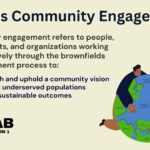The Essence of Diversity
Diversity is a concept that encompasses the recognition and acceptance of individual differences among people. It goes beyond just acknowledging variations in race, ethnicity, gender, age, and physical abilities. True diversity also includes differences in beliefs, perspectives, experiences, and backgrounds.
Embracing diversity means creating an inclusive environment where all individuals feel valued, respected, and empowered to contribute their unique talents and perspectives. It involves recognizing the richness that comes from having a variety of voices at the table and understanding that each person brings something valuable to the collective whole.
When we embrace diversity, we open ourselves up to new ideas, experiences, and ways of thinking. We break down barriers and foster a sense of unity that transcends superficial differences. By celebrating diversity in all its forms, we create a more vibrant and dynamic community where everyone has the opportunity to thrive.
At its core, diversity is about recognizing the inherent worth and dignity of every individual. It is about building bridges instead of walls and fostering a culture of inclusion where everyone feels seen, heard, and valued for who they are.
As we continue to navigate an increasingly interconnected world, embracing diversity becomes not just a moral imperative but also a strategic advantage. Organizations that prioritize diversity benefit from increased creativity, innovation, and productivity as they leverage the unique strengths of their diverse workforce.
In conclusion, diversity is not just a buzzword or a checkbox on a list of organizational goals—it is a fundamental principle that guides us toward a more equitable and harmonious society. By embracing diversity in all its forms, we unlock the full potential of individuals and communities to create a brighter future for us all.
Understanding Diversity: Key Questions and Insights for Building Inclusive Environments
- What is diversity and why is it important?
- How does diversity go beyond just differences in race and ethnicity?
- What are the benefits of embracing diversity in organizations?
- How can individuals contribute to creating a more diverse and inclusive environment?
- What role does diversity play in fostering innovation and creativity?
- How can organizations measure their progress in promoting diversity and inclusion?
- What are some common misconceptions about diversity?
- How can cultural sensitivity enhance interactions in diverse environments?
- In what ways does promoting diversity contribute to social justice?
What is diversity and why is it important?
Diversity is the recognition and acceptance of the multitude of differences that exist among individuals, encompassing aspects such as race, ethnicity, gender, age, beliefs, perspectives, and experiences. It goes beyond mere tolerance to celebrate the unique qualities that each person brings to the table. Diversity is vital because it enriches our communities, workplaces, and society as a whole by fostering creativity, innovation, and inclusivity. Embracing diversity allows us to learn from one another, challenge our assumptions, and create a more equitable and harmonious world where everyone feels valued and respected for who they are.
How does diversity go beyond just differences in race and ethnicity?
Diversity transcends mere distinctions in race and ethnicity by encompassing a wide spectrum of individual variances, including but not limited to gender, age, physical abilities, beliefs, perspectives, experiences, and backgrounds. While race and ethnicity are significant aspects of diversity, they are just a part of the multifaceted tapestry that makes each person unique. Embracing diversity in its entirety means recognizing and valuing the richness that comes from the multitude of differences present within a community or organization. By acknowledging and celebrating these diverse attributes, we create an inclusive environment where all individuals feel respected, empowered, and able to contribute their distinct talents and perspectives to the collective whole.
What are the benefits of embracing diversity in organizations?
Embracing diversity in organizations brings a wide range of benefits that contribute to both individual and collective success. By fostering an inclusive environment where diverse perspectives, backgrounds, and experiences are valued, organizations can enhance creativity and innovation. Different viewpoints can lead to more effective problem-solving and decision-making processes. Embracing diversity also improves employee morale and engagement, as individuals feel respected and empowered to contribute their unique talents. Furthermore, diverse teams are better equipped to understand and serve a diverse customer base, leading to improved customer satisfaction and loyalty. Overall, embracing diversity in organizations not only fosters a culture of inclusion but also drives business growth and success in a rapidly changing global landscape.
How can individuals contribute to creating a more diverse and inclusive environment?
Individuals can contribute to creating a more diverse and inclusive environment by first recognizing and valuing the unique perspectives and experiences that each person brings to the table. By actively listening to others, engaging in open dialogue, and seeking to understand different viewpoints, individuals can foster a culture of respect and empathy. Embracing diversity also involves challenging biases and stereotypes, advocating for equality and fairness, and actively supporting underrepresented groups. By being allies, promoting inclusivity in their personal interactions and spheres of influence, individuals can play a vital role in shaping a more welcoming and equitable community for all.
What role does diversity play in fostering innovation and creativity?
Diversity plays a crucial role in fostering innovation and creativity by bringing together individuals with unique perspectives, experiences, and backgrounds. When a diverse group of people collaborate, they bring a wide range of ideas, approaches, and solutions to the table. This diversity of thought sparks creativity and encourages thinking outside the box. Different viewpoints challenge assumptions, stimulate new ways of thinking, and lead to innovative breakthroughs that might not have been possible in a homogenous group. By embracing diversity, organizations can tap into the full spectrum of human potential and unleash a wealth of creativity that propels them forward in today’s rapidly evolving world.
How can organizations measure their progress in promoting diversity and inclusion?
Organizations can measure their progress in promoting diversity and inclusion through a variety of methods. One common approach is to establish key performance indicators (KPIs) related to diversity, such as tracking the representation of underrepresented groups in leadership positions, monitoring employee engagement and satisfaction levels across different demographic groups, and assessing the effectiveness of diversity training programs. Conducting regular surveys and focus groups to gather feedback from employees on their experiences with diversity and inclusion initiatives can also provide valuable insights. Additionally, analyzing retention rates, promotion rates, and pay equity data based on demographic factors can help organizations identify areas for improvement and track their progress over time. By taking a data-driven approach and continuously evaluating the impact of their efforts, organizations can ensure they are making meaningful strides toward creating a more diverse and inclusive workplace culture.
What are some common misconceptions about diversity?
One common misconception about diversity is that it only pertains to visible differences such as race or gender. In reality, diversity encompasses a wide range of characteristics, including but not limited to age, sexual orientation, religion, socioeconomic background, and cognitive styles. Another misconception is that diversity initiatives are about giving preferential treatment to certain groups. In truth, promoting diversity is about creating equal opportunities for all individuals and ensuring that everyone’s unique perspectives are valued and respected. Additionally, some may mistakenly believe that diversity efforts are unnecessary in today’s society. However, systemic inequalities and biases still exist, making it crucial to actively promote inclusivity and celebrate the richness that comes from embracing diverse experiences and viewpoints.
How can cultural sensitivity enhance interactions in diverse environments?
Cultural sensitivity plays a crucial role in enhancing interactions in diverse environments by fostering mutual understanding, respect, and empathy among individuals from different cultural backgrounds. When individuals are culturally sensitive, they are better equipped to recognize and appreciate the unique beliefs, values, customs, and traditions of others. This awareness enables them to navigate cross-cultural interactions with greater mindfulness and openness, leading to more effective communication, collaboration, and relationship-building. By embracing cultural sensitivity, individuals can create inclusive spaces where diversity is celebrated and everyone feels valued and understood.
In what ways does promoting diversity contribute to social justice?
Promoting diversity contributes to social justice by creating a more equitable and inclusive society where all individuals have equal opportunities to thrive. By embracing diversity in all its forms, we challenge systemic barriers and biases that perpetuate inequality and discrimination. Through promoting diversity, we amplify marginalized voices, celebrate cultural differences, and foster a sense of belonging for all members of society. This commitment to diversity not only promotes fairness and respect but also paves the way for greater understanding, empathy, and cooperation among diverse communities. Ultimately, by promoting diversity, we take a significant step towards achieving social justice by dismantling barriers and building a more just and harmonious world for everyone.





Leave a Reply